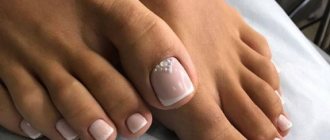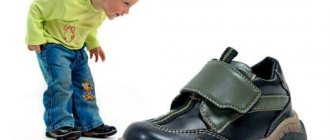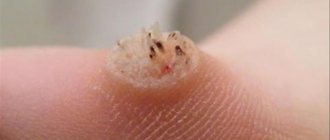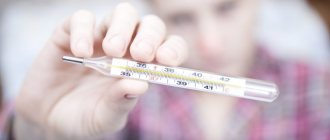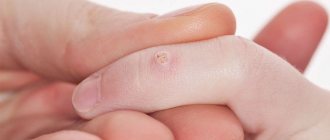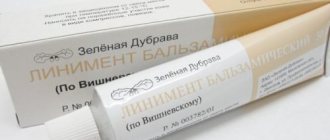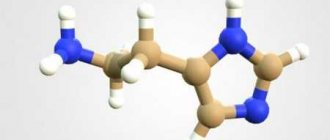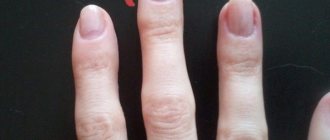A person feels constant discomfort in the presence of corns, scuffs on the heels, and calluses. If acute pain makes itself felt while walking, you need to be examined by a specialist. There is a risk of developing a wart called thorn. It affects the heel area and toes of the lower extremities and requires long-term therapy.
General concept
In the medical field, callus or plantar callus is commonly called Verruca plantaris (in Latin). It is distinguished by its radicular method of attachment after penetration into the deep layers of the dermis. A newly appeared growth can be easily eliminated with the help of traditional medicine. However, to completely eliminate the pathological formation, deep freezing techniques, electrocoagulation, and laser removal are used.
A neoplasm that has penetrated deep into the skin affects nerve endings, moreover, it can become a consequence of inflammatory processes due to the appearance of painful cracks. In most cases, areas of the feet are affected, less often the hands. But in some cases, formations progress on the delicate skin of the neck, face, and ankles.
Spica is a benign growth, but if proper therapy is not given, oncology may develop.
Features and signs of appearance
A wart on the sole usually does not exceed 2 cm, but in some cases it grows to 5 cm or more. It is distinguished by a round or oval shape with clear boundaries and a dried surface. When touched lightly, it feels sore and has an obvious thick texture. As a result of a more detailed examination using a microscope, the presence of black-brown inclusions is noted. After steaming the foot, thin threads penetrating through the layers of the epidermis are clearly visible in the affected area.
At first, the thorn looks like a dry callus and has a rough crust. In the absence of proper treatment, the growth changes color, its surface becomes lumpy, and a hole with a deep core forms in the middle.
When exerting physical stress on the foot, an unpleasant sensation occurs, reminiscent of a needle prick. If such a wart is not removed in a timely manner, new formations appear next to it.
Infection procedure
Shipiga is of viral origin and can occur as a result of contact with a pathogen carrier, through the use of shared objects. The microorganism very quickly settles in the slightest wounds, cracks of the feet, and increased comfort for it is created in a humid environment. People with excessive sweating of their feet, lovers of swimming pools, baths, saunas, and gyms are susceptible to infection. Simple rules - using personal hygiene products and shoes for swimming - will help avoid “acquaintance” with the virus.
Why do plantar warts occur?
The photo shows a plantar wart
Plantar warts have the same origin as papillomas, condylomas - papillomavirus. This pathogen spreads among people through contact and household contact. Infection occurs by shaking hands, kissing, using common household items, and walking barefoot in public places.
The virus penetrates the skin of the feet best in a moist and warm environment. Therefore, the easiest way to catch the disease is when visiting a swimming pool, sauna, or gym without replacement shoes.
If the immune system is strong enough, then infection may not occur or the virus will remain in the body in a latent state. But any malfunction in the functioning of a person’s defenses will lead to the formation of plantar warts.
In addition, the likelihood of the formation of plantar warts increases with excessive sweating of the feet, wearing uncomfortable tight shoes, various types of foot deformities (arthritis, osteoarthritis, flat feet), diabetes, varicose veins, and atherosclerosis.
In appearance, such a neoplasm resembles a hard nodule with clear edges that protrudes above the surface of the skin. The size varies between 1-2 cm. The color of the wart may be flesh-colored or become darker over time as the upper layers of the skin become keratinized.
Initially, the plantar wart is smooth, but gradually its surface is covered with a stratum corneum of cells and becomes rough. Often a small funnel, as well as dark dots, appear in the center of the neoplasm. The latter are traces of clogged capillaries.
Most often, a plantar wart is formed in a single copy. If there are a lot of such growths, this means that the virus has become overly active, and the patient’s immune system cannot cope with it.
Causes of the disease
Bunions on the feet occur due to the activity of the human papillomavirus. It is always present in the body, but increased reproduction occurs against the background of deteriorating immunity, changes in internal processes in pregnant women and growing children. Unpleasant calluses appear as a result of using tight shoes, in the presence of deviations in the form of club feet. Factors provoking the development of pathology:
- Burns, wounds, skin injuries.
- Increased sweating of the feet and interdigital spaces.
- Chronic lack of sleep, constant emotional stress.
- Often exacerbating chronic processes.
- Vitamin deficiency, overweight.
- The presence of viral, infectious diseases, for example, sore throat, ARVI, influenza.
Risk group
The following patients are most susceptible to developing holes in their feet:
- Military personnel.
- People who play sports professionally.
- Persons who, due to their professional activities, are forced to wear shoes for a long time.
Men suffer from pathology much more often than women: their feet sweat more often and are exposed to unfavorable conditions.
People at risk need to be especially careful about the health of the skin on their feet. If you experience frequent and profuse sweating of your feet, you should carefully monitor their hygiene.
Elimination of neoplasm using chemical methods
Conservative treatment of shipiga involves the use of a number of drugs containing aggressive components. They are applied to the area affected by the virus, causing necrosis of pathological cells, after which the keratinized surface is removed mechanically. The procedure can be painful, with subsequent formation of scars and cicatrices.
Medicines with chemical composition are divided into groups:
- Drugs with a necrotizing effect lead to mummification of the epidermis. Due to the content of aggressive components, such medications for external use are prohibited for use by pregnant women and children. Example: Solcoderm, Solkovagin.
- Keratolytic group products promote gentle exfoliation of the keratinized layer of calluses on the feet, gradually softening them. They enhance the effect of other medications used in parallel treatment, facilitating their penetration into the deeper layers. Example: patches containing urea, Collomac, Arievich ointment.
- Medicines that have a cryogenic effect freeze in a short time and stop the growth of papillomas. Example: Wartner, Cryopharma.
The best treatment is gradual
Special foam or gel pads will help relieve pain when walking. Do not use brute force on core calluses, focus on gradual improvement:
- Pumice Stone – After a bath or shower, regularly use a pumice stone to buff softened, dead skin. This will help relieve pain and soften your feet.
- Foam and gel patches - in the first days of the appearance of corns, special patches, usually sold in pharmacies, will help improve the condition.
One treatment option is laser removal of the rod, but this method is very painful. But it is possible to perform the procedure under local anesthesia, i.e. almost without pain.
An important point in treatment is replacing uncomfortable shoes with more comfortable ones that will not renew the treated corns.
When visiting a pedicure salon (they also have specialists who remove calluses), don't expect a painless procedure. In the salon, the keratinized skin is simply cut off with a sharp razor blade, scalpel or knife, after which a special patch is applied to soften the keratinization. The specialist will also definitely recommend a suitable ointment.
Benefits of physical exposure, immunotherapy
Treatment of a thorn on a toe or other part of the foot in the form of excision with a scalpel is used extremely rarely in modern medicine. The fact is that this method does not provide a 100% guarantee of recovery; the formation may appear in the same place. Relapse occurs when there are even small remains of callus in the deep layers of the skin. Surgical intervention is used if treatment by other means is impossible. During the procedure, local anesthesia is used, the rehabilitation period is very long.
Treatment shows a positive result if the use of external agents is combined with stimulation of the immune system. For this purpose, the doctor prescribes the following drugs to the patient: Amiksin, Imudon, Kipferon, Interferon.
Immunotherapy consists of creating the right diet with a high content of vegetables, fruits, and juices. Physical exercises in the form of running and swimming will be useful.
Therapy at home
Treatment of the spine consists of its complete elimination, removal of all roots. Otherwise, the growth will appear again. The patient can independently apply medications prescribed by the doctor to the problem area:
- Salicylic acid - has an anti-inflammatory and antiviral effect, applied to pre-softened skin in a not too thick layer. An occlusive dressing will only enhance the effectiveness of the procedure, which is carried out once a day until the papilloma is completely removed. You can replace this ointment with the Compid, Salipod patch.
- Viferon ointment - exhibits immunomodulatory and antiviral properties, helps get rid of growth. The lesion is treated with it up to 4 times a day, the full course is 7 days. It is not recommended to use the product in children.
- Lapis pencil with an antiseptic effect, which is ensured by the silver contained in it. Before use, the applicator is moistened with water and applied to the formation. It is unacceptable for the substance to come into contact with healthy areas. The pencil is not suitable for treating warts on the face and neck.
- Medicinal liquid Supercelandine, containing strong alkalis. Be sure to treat the dermis around the spine with a thick cream, after which a small amount of the solution is applied to the center of the growth. The course lasts until the plantar wart is completely removed; in some cases, burning, itching, and pain appear.
- The drug in tablets Roaccutane contains isotretinoin and is a keratolytic. The course of treatment for thorny foot at home can last up to 4 months. Contraindications include liver and kidney dysfunction, obesity, and pregnancy.
- Assgiape ointment - helps to cope with compactions on the feet in advanced form, is a keratolytic. During application of the product, the neuronal connection in the keratinized cells is destroyed. The composition includes urea, lactic, citric, salicylic acids. Side effects include itching and burning.
- Liquid Feresol has a mummifying effect, the method of application is similar to the drug Superchistotel. You cannot use the product if there are moles next to the papilloma.
How to get rid of a hole in the foot
A hole in the heel is a rare symptom that doctors encounter. In most cases, this is due to dermatological pathology.
This may be a single hole or multiple lesions of the foot, a large neoplasm or a small one. Why does it form, and what ways can you get rid of it?
Causes of the symptom
It is immediately worth noting that this is a pathological phenomenon that does not occur on its own and there is always a reason for it.
As a rule, people who, due to their professional activities, have to wear closed shoes for a long time, go to the doctor with a similar problem: military personnel, professional athletes, security guards, couriers, etc.
This factor causes regular stress on the limbs, especially the feet. In such cases, it is recommended to follow the rules of hygiene, wear socks made of natural material, and shoes of the same type (for example, made of leather). The latter should not put pressure on the feet, which would block sweating.
When making a diagnosis, the extent of involvement of the skin in the pathological process, the size of the holes, and the presence of concomitant symptoms are taken into account. It is possible to determine the true cause only after a comprehensive diagnosis (with bacterial culture analysis, consultation with a dermatologist, etc.).
Mycosis
Pathology develops against the background of exposure to a parasitic fungus. In most cases, mycosis occurs on the feet due to increased sweating in this area.
The latter is due to:
- hormonal imbalance;
- liver dysfunction;
- pathologies of the nervous system;
- vascular diseases;
- hypertension (high blood pressure).
The clinical picture of the disease depends on what type of fungus caused the pathology. Common symptoms include: the appearance of an unpleasant odor, a change in the color tone of the skin and nails, the appearance of itching and flaking on the feet, and pit-like growths surrounded by a white or red border.
Small cell keratolysis
A photo-symptom such as holes on the foot is a sign of small cell keratolysis. The infectious disease is caused by exposure to globular micrococcus and pseudomonas.
There is not one neoplasm, but several located close to each other. As a rule, the symptom covers the heel area, but interdigital folds are no exception.
Small cell keratolysis is characterized by the following symptoms:
- the appearance of holes with a diameter of 2-6 mm;
- fusion of punctate pits, which forms erosive neoplasms;
- the appearance of an unpleasant odor;
- increased sweating;
- hyperkeratosis - thickening of the skin.
When palpating the pits, they may hurt. If the affected area is wet, it becomes whitish. Progression of symptoms occurs in the warm season.
Shipitsa
If a hole appears on the heel and does not heal for a long time, it may be a thorn - a wart that grows in the opposite direction, that is, deep into the epidermis.
The pathology develops against the background of activation of the human papillomavirus, which enters the body through microdamages on the skin and integrates into the structure of healthy cells.
Among the characteristic symptoms of a spine on the leg:
- a hole 3-10 mm in size, which protrudes slightly above the level of the skin, but has a depression inside;
- pain in the affected area;
- itching syndrome at rest of a constant nature;
- the appearance of black dots in the depression 2-3 weeks after the appearance of the tumor, which are caused by blockage of blood vessels.
Due to constant itching and pain, the spine brings significant discomfort, and therefore requires urgent treatment.
Treatment for a hole in the heel
How to get rid of a hole in the foot depends on the reason that contributed to its appearance. For this purpose, various techniques are used.
- In case of increased sweating, special procedures are carried out, which consist of introducing a special substance into the sweat glands that suppresses their activity.
- If this procedure is intolerable, physiotherapy is performed. This may be a course of electrophoresis with medicinal components, for example, silver or aluminum chloride. Such substances are applied to a special pad, which is then applied to the foot. A pad with an electrode from which current emanates is secured on top.
- Auxiliary treatment - folk remedies. However, you should not abuse them, since in some cases, for example, with intolerance to the components, they can cause side symptoms. A hole in the heel of a child or an adult can be treated with regular tea (strong tea leaves). Make a compress before going to bed, secure with a bandage and leave until the morning. Apply compresses from burnet infusion: 2 tbsp. The plants are brewed in 250 ml of boiling water.
- In some cases, antibacterial agents are used, for example, the drug Erythromycin, which belongs to the group of macrolides. It can be tablets, ointment, powder. No less effective are the drugs Clindamycin, Bactroban, and Teymurov's paste.
Spine treatment
It is treated with methods such as cryodestruction, electrocoagulation, and pulsed laser therapy.
- The first method involves burning out the growth with liquid nitrogen. Cold exposure helps to destroy the body of the spine and reduce the inflammatory process.
- Electrocoagulation helps only if the spine has formed very recently, in the absence of deep germination of thread-like roots into the layers of the dermis. The neoplasm is exposed to high-frequency currents, which contributes to its burning.
- Pulsed laser therapy is the most popular and effective method for removing a hole in the foot. A laser beam is directed at it, cauterizing the growth and disinfecting its surface. In this case, complications do not arise and there is no risk of relapse.
Conclusion
Doctors warn! Shocking statistics - it has been established that more than 74% of skin diseases are a sign of parasite infection (Accarida, Giardia, Toxocara).
Worms cause enormous harm to the body, and the first to suffer is our immune system, which should protect the body from various diseases.
The head of the Institute of Parasitology shared the secret of how to quickly get rid of them and cleanse your skin, it turns out that it’s enough... Read more...
In any case, only a doctor can determine what this phenomenon is and how to treat the pathology. You should not self-medicate, because only with qualified therapy can you hope for a favorable prognosis.
Source: //kozhamed.com/kak-izbavitsya-ot-dyirki-na-stope/
Minimally invasive methods
For deeply ingrown warts, creams and ointments for external application are ineffective. In such situations, specialists recommend undergoing one of the minimally invasive procedures to remove the growth, after which there will be no relapse:
- Cryodestruction is the burning of a tumor with liquid nitrogen. Cold has a destructive effect on papilloma, kills bacteria and viruses that cause the inflammatory process. After treating the spine, a bubble forms in its place, disappearing after a couple of weeks. The method is painless, but there is a risk of injury to adjacent healthy skin.
- Electrocoagulation is appropriate when treating a newly emerging wart, the filamentous roots of which have not yet penetrated deep into the soft tissues. The process involves acting on the papilloma with high-frequency impulses, after which it dies. The patient may feel pain because at the end of the procedure a bleeding wound will form on the foot. It is extremely rare for scars to remain.
- Pulsed laser is the best way to help treat thorn on the sole. The beam directed at the papilloma cauterizes it to the very base and disinfects the surface in contact with the environment. There are no complications, rehabilitation is short, relapse is prevented. The disadvantage is the high cost of such an operation.
Prevention of complications after wart removal
To prevent and prevent the growth of plantar warts, you should follow simple rules:
- An injury or cut should be treated immediately with special means.
- Walk only in loose and comfortable shoes.
- Treat sweaty feet.
- Increase and strengthen immunity.
The main measure to prevent complications after destruction, which include pain after wart removal, is the choice of an experienced specialist for the operation, and, if possible, the method of removal.
But it is also extremely important after the procedure, regardless of the chosen method, to adhere to other measures to prevent pain at the site of wart removal:
- follow the doctor’s instructions regarding wound treatment and personal hygiene measures;
- do not try to tear off the scab yourself;
- do not put pressure on the wound, avoid contact with clothing and shoes;
- It is prohibited to supplement drug treatment with untested alternative methods;
- take care of your general health, support your immune system with both proper nutrition and pharmaceutical medications;
- give up bad habits at least for a while.
Papilloma viruses can persist for a long time in the environment. It is necessary to keep your feet clean and not walk without shoes, especially in public locker rooms, bathrooms, and in the swimming pool. It is necessary to use special slippers to protect the soles of the feet from contact with surfaces contaminated with particles of other people’s skin. You should also not wear other people's socks or shoes.
Socks and foot towels should be thoroughly washed with hot water, scissors, nail files, and pumice should be disinfected. Be sure to wash your hands with soap after touching a wart or performing various medical procedures.
This material is posted for educational and informational purposes, does not constitute professional medical advice or scientific material and cannot serve as a substitute for medical advice.
In order to avoid the occurrence of diseases such as warts on the soles of the feet, simple preventive measures should be followed:
- Regularly saturate the body with beneficial vitamins and microelements that will strengthen the immune system to fight viral damage;
- Eliminate corns and calluses on the soles of the feet in a timely manner;
- If damage to the skin occurs on the sole, the scratches should be treated with an antibacterial agent;
- Avoid walking barefoot in public areas;
- Have individual personal hygiene items;
- Maintain proper foot hygiene; in case of increased sweating, use special preparations to improve the functioning of the sweat glands.
Following simple prevention methods can prevent the development of an unpleasant disease on the soles of the feet.
Folk remedies against corns
In addition to complex drug treatment, “grandmother’s” advice effectively copes with spines. Formations on the palms or soles of the feet can be eliminated at home in the following ways:
- Regularly apply a nettle compress to the affected area on the foot. The leaves of the plant are finely chopped, wrapped in fresh burdock and fixed on the problem area overnight. For greater comfort, it is recommended to use a sock. Nettle can be replaced with garlic, potatoes, and Kalanchoe.
- Vinegar lotions (9%) work well against ingrown calluses. It is mixed with fresh garlic, crushed into a paste, and applied to the papilloma. First, all adjacent skin is sealed with adhesive tape. After 2 hours, the mixture is removed from the skin. Salicylic ointment, applied immediately after washing off the lotion, will help enhance the therapeutic effect.
- A time-tested remedy is iodine. It has a disinfecting, drying, anti-inflammatory effect. Iodine is suitable for the treatment of newly formed compaction on the foot; it is regularly applied to the affected area until the corn completely disappears.
- The drug, similar in properties to Superclean, can be easily prepared at home. Freshly collected celandine leaves are crushed into a pulp and filled with medical alcohol (90%). The liquid is infused for 2 weeks in a cool place, filtered. It is applied pointwise only to the center of the spike, it is unacceptable to get it into adjacent areas. The course of treatment depends on the degree of growth of the papilloma.
Thorn on the sole is a common injury on the human body that requires immediate treatment. Complex therapy carried out in the early stages of papilloma development will help to quickly remove it and prevent relapse.
